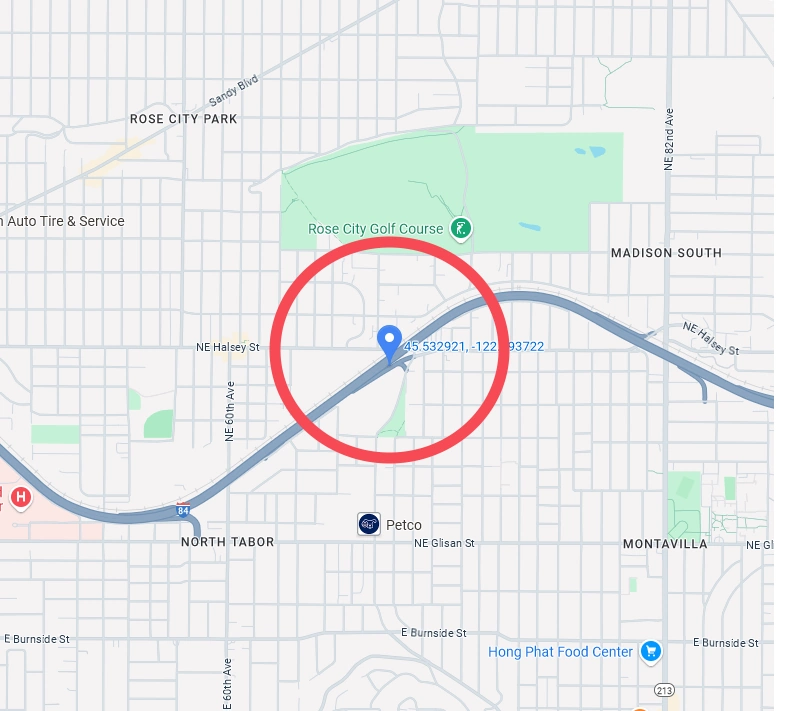Portland's Top Speeding Hotspot: Find Out Why
Portland is famous for its laid-back culture, eco-friendly values, and—let’s face it—some of the slowest traffic in the Pacific Northwest. But there’s one place in Rip City where drivers seem to abandon all of that. It’s not a racetrack or a long, open highway—it’s a single offramp that has become Portland's prime location for speeding. According to public traffic data from the City of Portland, NE 68th Avenue at the I-84 Eastbound Offramp has officially earned the crown as the most speed-prone stretch of road in the entire city.
Table of Contents

What’s So Special About This Offramp?
At first glance, this stretch of road seems pretty ordinary. It's a small offramp connecting the busy I-84 freeway to the quieter but still busy NE Halsey St. However, something about this particular location makes it almost impossible for drivers to resist putting the pedal to the metal. Whether it’s due to the design of the road, the lack of a posted speed limit, or simply the transition from fast freeway driving to neighborhood streets, this spot has turned into Portland’s speeding capital.
Between Monday, August 15th, 2022, and Wednesday of that same week, the city recorded traffic data at this location, and the results were surprising, to say the least. With a daily average of 4,006 vehicles that passed through this offramp during that brief period, an astonishing 99.6% of drivers exceeded the speed limit. The speed limit is listed as 25 mph on the PBOT map of traffic counts. Even more incredible, 78.3% of those drivers were going at least 10 mph over the limit, meaning they were barreling through the offramp at speeds of 35 mph or more. These numbers paint a picture of an offramp where the notion of a speed limit is more of a suggestion than a rule. Which makes sense as no speed limit is posted on this exact section and instead there is an advisory limit of 20 MPH.
The Science Behind Speeding: Why This Offramp Is So Prone to Heavy Feet
What is it about this seemingly innocuous offramp that makes drivers forget all about their speedometers? Let’s break it down.
First, there’s the lack of a posted speed limit. Technically, there’s no speed limit sign telling drivers how fast they should go as they exit the freeway. Instead, at this offramp, they encounter an advisory speed limit of 20 mph. Advisory speed limits are just that—advisory. Unlike a posted speed limit, which can carry the weight of a fine or ticket, advisory limits are designed to recommend a safe speed for certain road conditions, like sharp turns or areas with limited visibility. But without a solid reminder that they have to slow down, many drivers treat these advisories as optional—and that’s exactly what happens on this ramp.
Then, there’s the road design. This offramp is an extension of I-84, a freeway where the speed limit can reach 75 mph. After cruising at that speed for miles, drivers are conditioned to maintain momentum. And while it’s perfectly reasonable to expect drivers to ease off the gas once they exit the freeway, the shift from freeway driving to an offramp can be disorienting. Many drivers may not immediately register the need to slow down, especially without a clear speed limit sign.
Adding to the confusion is the fact that the offramp quickly transitions into NE Halsey St, a local arterial road with a 30 mph speed limit. So even if drivers notice the advisory speed, they might figure they’re about to hit a road where 30 mph is legal—so why bother slowing to 20 mph on the offramp? It’s a combination of factors that practically encourages speeding.
Additionally, the offramp is relatively short and goes uphill before coming to a stop sign. This likely results in cars slowing down at a rate that feels comfortable from Freeway speeds to the full stop. Slowing down to 25 MPH a couple of hundred feet before the stop sign appears to be unnatural to most drivers on this particular stretch of road.
A Perfect Storm: The Factors That Contribute to Portland's Top Speeding Zone
- The Freeway Factor: Coming straight off I-84, drivers are still mentally in "freeway mode," where higher speeds are the norm. Shifting from 55 mph to a mere 25 mph takes more mental effort than most drivers are willing (or able) to manage.
- The Advisory Speed Confusion: The lack of a posted speed limit and the presence of an advisory speed of 20 mph sends a mixed message. Without the legal pressure of a mandatory speed limit, most drivers treat the advisory as a suggestion—one they’re happy to ignore.
- The 30 mph Zone: As the offramp transitions into Halsey St, drivers are likely to feel like they’re already on a 30 mph road, meaning they see no need to follow the lower advisory speed on the offramp. Drivers likely believe 30 MPH to be the limit for the connecting stretch of road as well.
- The Road Design: Offramps like this one are often designed to guide drivers gently into slower traffic. But without sharp curves or dramatic lane changes to force a reduction in speed, the road gives drivers a sense of comfort and control that encourages faster speeds.
Breaking Down the Data: A Deeper Dive into Portland’s Speeding Stats
Let’s take a moment to fully appreciate just how unusual this spot is. The fact that 99.6% of drivers are speeding means that almost everyone coming off this offramp is pushing the limits. To put that in perspective, that’s nearly 4,000 daily drivers in just three days, almost all ignoring the advisory speed. It’s not just the outliers or the occasional driver in a hurry—it’s practically everyone.
But the most striking statistic is that 78.3% of drivers are going at least 10 mph over the limit, meaning they’re driving at 35 mph or more. When you consider that freeway offramps are designed to help drivers safely transition to lower speeds, these numbers are a clear indicator that something about this particular location isn’t working as intended. The majority of drivers are treating it like an extension of the freeway, rather than an entrance to a slower residential area.
The Fun Side of the Data—And the Not-So-Fun Consequences
Sure, it’s fun to think about how nearly every driver is speeding on this offramp. It almost feels like a game—who can keep their foot on the gas the longest after leaving the freeway? And while these statistics are fascinating, they’re also a reminder of how quickly speeding can turn dangerous.
Speeding is one of the most common causes of traffic accidents, and while the data from this offramp doesn’t directly show accident rates, it’s easy to imagine how so many drivers speeding could lead to problems. Whether it’s losing control on a curve, underestimating how much space they need to brake, or failing to see another car merging into traffic, the faster you’re going, the less time you have to react—and the more serious an accident can be if it happens.
What Can Be Done to Slow Drivers Down?
While we can marvel at how this offramp has become the city’s top spot for speeding, it also raises the question of what can be done to fix it. Could adding a posted speed limit sign make a difference? Would sharper curves or traffic calming measures help force drivers to slow down? It’s hard to say. What’s clear is that the combination of factors at play—freeway speeds, the advisory limit, and the transition to NE 68th Avenue—makes this a unique location where speeding is almost inevitable.
So Next Time You’re on NE 68th Avenue...
Next time you find yourself exiting I-84 onto NE 68th Avenue, take a moment to reflect on what you now know: this offramp holds the title for the highest percentage of speeding drivers in all of Portland. It’s a curious claim to fame, but one that’s grounded in real data. As fun as it might be to think about, it’s also a good reminder to keep an eye on your speedometer. After all, even though 99.6% of drivers are speeding, that doesn’t mean you have to be part of the statistic!
We will review your case for free.
Pay us nothing unless we get you a better settlement.
We work on contingency.

